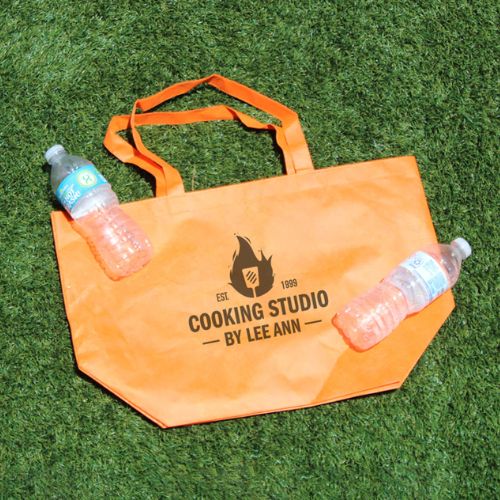Sales letter
A sales letter is a letter from a company, business or organization to a target group with the aim of marketing their products or services. In some cases, it is meant to encourage the target group to interact with the brand in a certain way.
What is important in a sales letter?
In order to ensure the sales letter is not directly thrown away and the desired success is achieved, it should be written and designed with care. The following factors are decisive for advertising letters:
- Spelling and grammar
Any text used in mailings should be flawless. For many people it is an exclusion criterion when a text is incorrect, regardless of whether it is a transposed letter or a missing comma. Therefore, the texts should be checked according to the 4 or even 6 eyes principle.
- Personalization
If the specific salutation or greeting is known, you should use it. A general “Dear Sir or Madam” or “To Whom it May Concern” is not as effective as “Dear John Smith” or “Dear Jane.” This sets your customers or addressees apart from the crowd and it is more personal. In this case, the person feels unique and treated individually.
- Paper quality
Paper quality should not be skimped on because this is a reflection of your company. If you use cheap paper, your company will also be associated with qualitative inferiority. On the other hand, if you use high-quality or even glossy paper, your promotional letters will look high-quality and be comfortable to hold.
- Call to action
Your sales letters should have a clear call to action to encourage users to take action. For example, you can use "Visit our website" or "Order today" as a call to action.
- Discount
Almost everyone likes to get something at a discounted rate. Use this fact when designing your sales letters and offer a discount. Even a small discount can significantly increase the success rate of your mailing.
- Corporate design
The sales letters should be designed with the same corporate design that is used as part of the corporate identity. This creates the recognition effect that brings your letter into a direct connection with your brand, which in turn will (hopefully) evoke positive emotions. Consistent branding will help with long-term brand recognition.
- Print quality
The print quality must be impeccable in order to leave a positive impression on the recipient. Ideally, all sales letters should therefore be checked before they are sent. The same applies to the supplements, if any are used.
- Supplements
A small token of kindness, such as a little candy with your logo or a printed ballpoint pen, can increase the impact of your mailings enormously. This is because they signal the generosity of your company and show that your customers are important to you. So-called mailing boosters and supplements are best printed individually with your logo or a motif.
- Using the AIDA formula
The AIDA formula is an effective marketing tool that should be utilized for all aspects of the marketing goal. The A stands for attention. In the beginning the emotions of the readers should be addressed as this is how attention is drawn. The I stands for interest. In this step, the offer or letter should be presented to the customer in a tasteful way, possibly with additional tips and tricks. The D in the AIDA formula stands for desire. At this point, the offer should be designed in such a way that the readers want to take advantage of it. The last letter A stands for action. This is usually at the end of the text and a so-called call to action is inserted so that the target group contacts the company and carries out the desired action.
If all these factors are at the highest level, one can speak of a promising and high-quality sales letter.
Design options for a sales letter
Marketing managers can let their imaginations run wild when designing offline advertising, including sales letters. There are two types of mailings: enveloped and non-enveloped. In the case of envelopes, the sales letter is in an envelope and looks like a typical letter. The non-enveloped mailings consist of the advertising letter itself, which also plays the role of an envelope. You can clearly classify the sales letter as advertising, which is advantageous or not depending on the individual case. Advertising letters in the form of brochures, postcards or folding cards are also conceivable.
Sales letters and legal
It is generally recommended that you seek legal advice on this marketing measure, as the legal situation can change at any time. Before starting these marketing measures, companies should contact a legal representative, because not only is the sending of advertising letters subject to strict regulations, but the texts used in the advertising letter should also be checked in some sectors. For example, the texts in the health sector are not allowed to mention any promises of healing.
How much do sales letters cost?
The costs per sales letter are relatively low compared to online advertising, for example campaigns like Facebook ads or newsletter marketing. The biggest cost factor is the copywriter who writes professional copy for the advertising campaign. Printing and postage costs are also incurred. These depend on the number of advertising letters required. Before starting an advertising campaign with letters, the possible success should first be calculated.
Advantages of sales letters
- They are cheap and cof-effective. Compared to online advertising, for example, sales letters are cheap and accessible to every company
- You can personalize them. No other type of advertising reaches customers as personally as a sales letter. Newsletters via email are often seen as spam and advertising via Facebook ads or similar is aimed at a broad audience.
- Use of supplements is possible. Advertising letters are the only way to give customers small gifts without losing the advertising impact.
Disadvantages of sales letters
- They are often thrown in the garbage or in the recycling. The sales letters are often perceived directly as advertising and thrown away. Also, they are not environmentally friendly as they create paper waste. Therefore, it is important to follow tips for the creation of sales letters. A briefing for the text is essential.
- Mailings are expensive. Planning and implementing the advertising campaign takes a lot of time. The text(s) must be written. The letters have to be printed out and checked, and only then are they sent to the target group.
- No conversion tracking possible. In the case of sales letters, it is not possible to determine whether the letter triggered the respective interaction or whether a conversion was achieved through other marketing channels.
Our conclusion
Sales letters remain a successful tool in offline marketing to contact customers, inform them about an offer or provide other information if they are professionally designed and sent to the right target groups.






